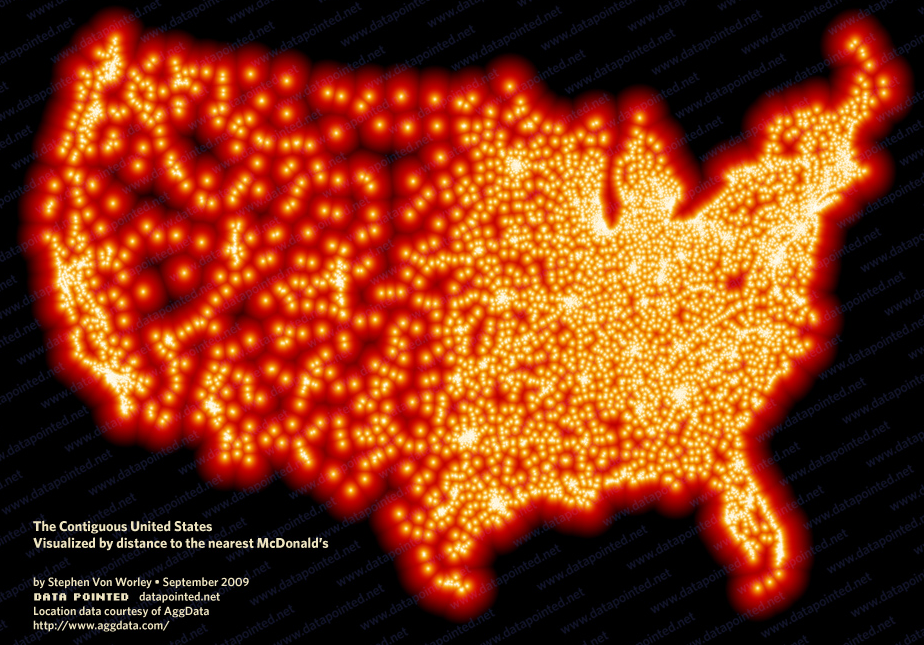
Image by Stephen von Worley
Last week, I wrote about the power of cold-war era maps when it comes to visualizing Western attitudes towards the Soviet bloc, and, in the work of William Bunge, visualizing themselves. This week I want to continue my trip down critical cartography's rabbit-hole with an overview of maps that attempt to locate forms of the "American experience." How can aspects of daily life in America be represented visually? The following maps try to answer that question, in playful, political, and subversive ways.
Recent comments
2 years 29 weeks ago
2 years 44 weeks ago
2 years 44 weeks ago
2 years 50 weeks ago
3 years 4 weeks ago
3 years 4 weeks ago
3 years 4 weeks ago
3 years 6 weeks ago
3 years 6 weeks ago
3 years 6 weeks ago